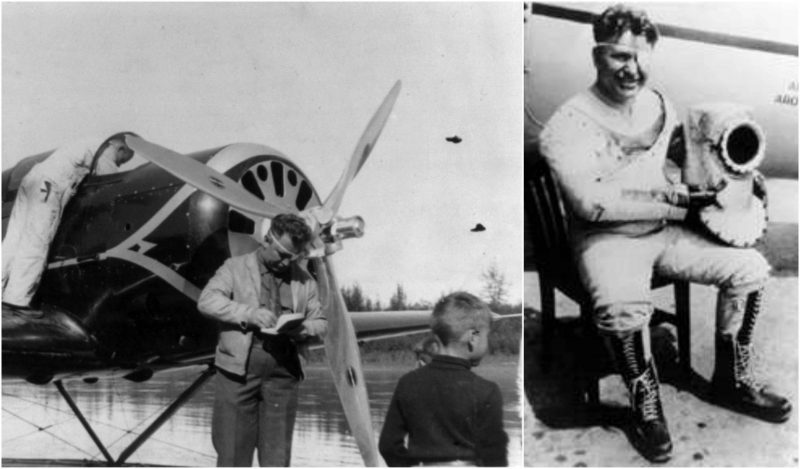Wiley Post was born in November of 1898 near Grand Saline, Texas, to cotton farmers. As a young boy, his family moved to a farm in Garvin County, Oklahoma. He did not make it past the sixth grade in school.
Post decided he wanted to be a pilot when he saw an airplane in flight in 1913 at the Lawton County Fair. He registered at the Sweeney Automobile and Aviation School in Kansas City. After flight school, he returned home and went to work for a construction company.
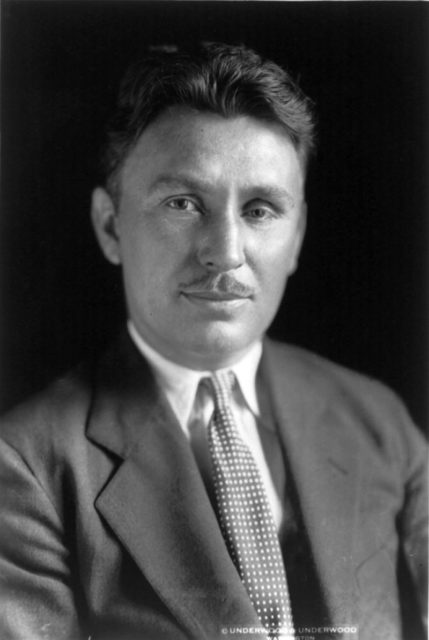
During World War I, Post became a pilot in the United States Army Air Service, a forerunner of the United States Army Air Corps and the United States Air Force. Post was learning radio technology, but the war ended before he could complete military training. He went to work in the Oklahoma oilfields, where in 1926 an accident in the fields caused him to lose his left eye. He was arrested in 1921 for stealing a car and was sentenced to 10 years at the Oklahoma State Reformatory but was released after one year.
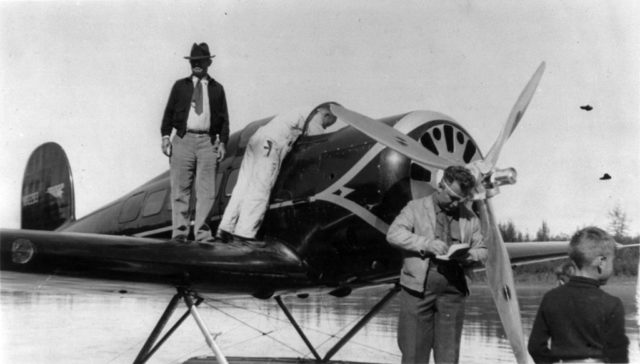
At age 26 he joined a flying circus, Burrell Tibbs and His Texas Topnotch Fliers, and became popular at barnstorming. Post used the settlement money from the oil-field accident to buy his first airplane. When Post was asked to fly famous humorist and author Will Rogers to a rodeo, it began a lifelong friendship between the two.

Post was hired by Oklahoma oilmen Powell Briscoe and F.C. Hall in 1930 as a private pilot. Hall had purchased a single-engine Lockheed Vega, a prevalent aircraft of the 1930s, and named the plane the Winnie Mae after his daughter. After winning the National Air Race Derby flying from Los Angeles to Chicago, Post painted “Los Angeles to Chicago 9 hours, 8 minutes and 2 seconds August 27, 1930” on the body of his plane. Second place winner, Adam Charles Williams, finished at 9 hours, 9 minutes, and 4 seconds. The plane was popular among aviators and was the same model that Amelia Earhart flew.
On June 23, 1931, Post and Harold Gatty, his navigator, took off in the Winnie Mae from Roosevelt Field on Long Island for a trip around the world. They landed at Harbour Grace, Flintshire, Hanover, Berlin, Moscow, Novosibirsk, and Nome, Alaska, where a brief stopover was necessary to have the propeller repaired. The next stops were Fairbanks, Edmonton, and Cleveland before returning to Roosevelt Field. After traveling 15,474 miles, they arrived back on July 1st, with a record time of 8 days, 15 hours, and 51 minutes. They visited the White House for lunch on July 6th, rode in a New York City parade on the 7th, and were honored at a dinner given by the Aeronautical Chamber of Commerce of America.
Hall sold the Winnie Mae to Post, who, along with Gatty, published Around the World in Eight Days–a nod to Jules Verne’s Around the World in Eighty Days. The book was a story of their journey, with an introduction by Will Rogers. After the celebrations were over, Post wanted to open his own flight school, but because he had only a 6th-grade education, he was unable to borrow enough money. Unfazed, Post decided this time he would make a solo flight around the world and break his previous speed record. Post updated his aircraft with the autopilot mechanism required for a solo flight and a newly perfected radio direction finder.
In 1933, he took off from Floyd Bennett Field. He stopped in Berlin for repairs to his autopilot, with another stop at Königsberg for replacement maps. The autopilot was still not functioning properly, causing him to stop first in Moscow and then Novosibirsk, then Irkutsk where it was finally repaired. He made stops in Rukhlovo, Khabarovsk, and in Flat to replace his propeller. Then it was on to Fairbanks, Alaska, and Edmonton, Canada, and then finally a landing at Floyd Bennett Field. He had broken his own record, accomplishing the trip in 7 days, 18 hours, 49 minutes. The trip was a media sensation, and over 50,000 people were at the airport on July 1st to welcome him home.

A year later Post entered into a financial agreement with the Phillips Petroleum Company. Post wanted to fly at higher altitudes, but most airplanes at that time could not be pressurized. Without pressurization, the air is too thin and the temperature is too low. He worked with Russell S. Colley of the B.F. Goodrich Company to produce the world’s first pressure suit. It took three tries to perfect the suit before they were finally successful.
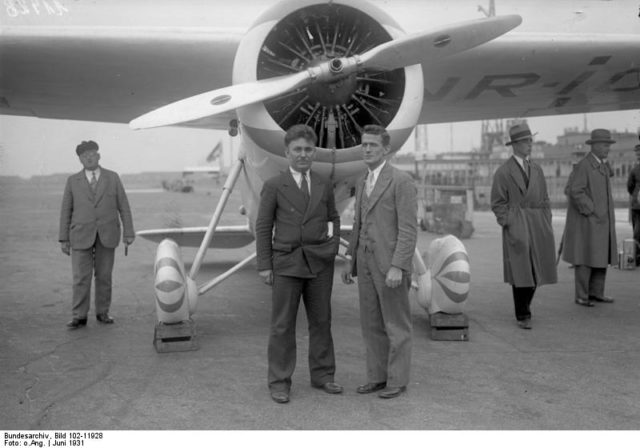
The suit had three layers consisting of heavy long underwear, a black rubber internal air pressure bladder, and an outer layer of double ply rubberized parachute material glued to a jointed frame that gave the wearer the ability to operate the controls and enter and exit the airplane. The frame also had rubber boots, pigskin gloves, and a bell-shaped diver’s helmet. The aluminum helmet’s round faceplate stayed sealed at the height of 17,000 feet and included earphones and a throat microphone. In the test flight on September 5, 1934, Post reached an altitude of 50,000 feet, enabling him to discover the jet stream.
The next year, Post was looking for a mail-and-passenger air route from the western coast of the United States to Russia. He put together an aircraft with parts salvaged from two different planes–the wings from a Lockheed Explorer and the body from a Lockheed Orion. The Explorer wings were six feet longer than the original, which helped extend the aircraft’s range, and the lack of retractable landing gear allowed for floats for water landings. Lockheed rejected the modifications, saying the two models were not compatible, and combining them was possibly dangerous. So Post made the changes himself.
During the time the airplane was being refitted, Will Rogers frequently visited the airport in Burbank, California. One day Rogers asked Post to fly him to Alaska to find new material to write in his columns. When the floats didn’t arrive in time for takeoff, Post used a set made for a larger airplane, adding weight to the already-heavy nose of the aircraft. A test flight was completed in July, and Post and Rogers left the Seattle area in August, making a few stops in Alaska. Rogers typed while Post flew the plane.
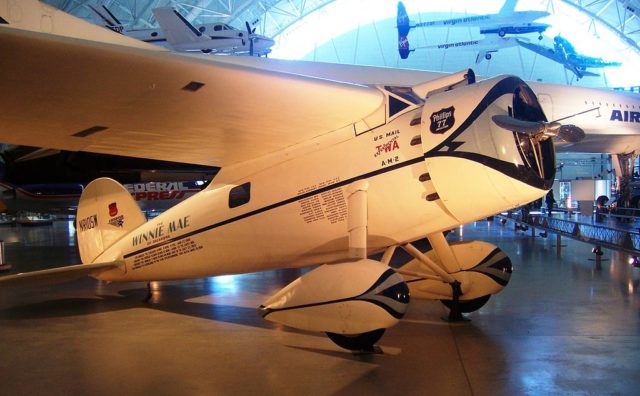
On August 15th they departed Fairbanks, Alaska in bad weather, heading for Point Barrow. Just a few miles from Point Barrow they got lost and set down in a lagoon area to get their bearings. The engine failed at low altitude during takeoff, and because of the heavy nose, the aircraft dove into the lagoon. As the right wing was cut off, the plane landed upside down in the shallow water; both Rogers and Post were killed on impact. Post was 36.
Related story from us: The story of why pilots say “Roger that”
Before they had left Fairbanks, they autographed a yacht club burgee at the South Coast Corinthian Yacht Club, where it is now on display. The restored flight suit lives at The Smithsonian Museum in Washington D.C
